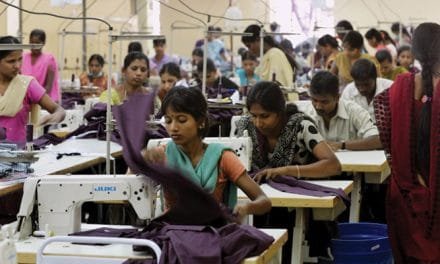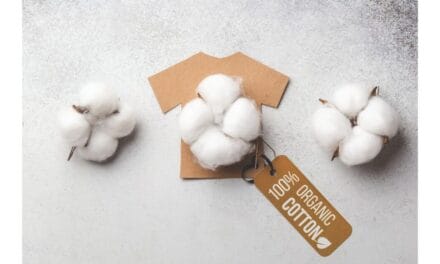 The Asia Textile Sizing Chemicals Market serves as a crucial component of the region’s textile industry, supporting the production of high-quality fabrics for diverse applications. Textile sizing chemicals play a pivotal role in enhancing the performance, appearance, and durability of yarns and fabrics during the weaving process. With Asia being a key hub for textile manufacturing, the market for sizing chemicals experiences robust growth driven by increasing demand for textiles in both domestic and international markets.
The Asia Textile Sizing Chemicals Market serves as a crucial component of the region’s textile industry, supporting the production of high-quality fabrics for diverse applications. Textile sizing chemicals play a pivotal role in enhancing the performance, appearance, and durability of yarns and fabrics during the weaving process. With Asia being a key hub for textile manufacturing, the market for sizing chemicals experiences robust growth driven by increasing demand for textiles in both domestic and international markets.
As per newly-released data by Persistence Market Research on textile sizing chemicals market shows that sales are expected to reach around US$ 389.9 million by the end of 2022, registering a Y-o-Y growth of approximately 5.9%. The market of Asia textile sizing chemicals is projected to witness a CAGR of magnitude 7.0% over the period of 2022 and 2033 on a value basis.
Market Growth Factors:
• Expanding Textile Industry in Asia: The rapid expansion of the textile industry in Asia, fueled by factors such as population growth, urbanization, and rising disposable incomes, drives market growth for sizing chemicals. Countries like China, India, Bangladesh, and Vietnam are major contributors to the global textile market, generating significant demand for sizing chemicals to support their manufacturing operations.
• Technological Advancements in Textile Processing: Technological advancements in textile processing techniques and equipment contribute to the growth of the sizing chemicals market in Asia. Innovations in sizing formulations and application methods enable manufacturers to achieve superior fabric properties, such as strength, smoothness, and abrasion resistance, while optimizing production efficiency and cost-effectiveness.
• Increasing Demand for Specialized Textiles: The growing demand for specialized textiles, including technical textiles, functional textiles, and performance apparel, drives market growth for sizing chemicals in Asia. These sectors require fabrics with specific properties, such as moisture management, flame retardancy, and antimicrobial properties, which can be achieved through the precise application of sizing chemicals during the weaving process.
• Focus on Sustainability and Environmental Compliance: Environmental regulations and consumer preferences for sustainable products are influencing the development of eco-friendly sizing chemicals in Asia. Manufacturers are investing in research and development to formulate sizing agents that minimize environmental impact, reduce water and energy consumption, and comply with stringent regulations governing chemical usage in textile production.
• Shift towards Water-Based Formulations: There is a notable shift towards water-based sizing formulations in the Asia Textile Sizing Chemicals Market, driven by concerns over environmental sustainability and worker safety. Water-based sizing chemicals offer advantages such as reduced VOC emissions, lower flammability risks, and ease of application, making them increasingly popular among textile manufacturers seeking greener alternatives.
• Strategic Investments and Collaborations: Key players in the Asia Textile Sizing Chemicals Market are making strategic investments in research, manufacturing capabilities, and distribution networks to strengthen their market presence and meet growing demand. Additionally, collaborations between chemical manufacturers, textile mills, and research institutions facilitate technology transfer and innovation, driving market growth and competitiveness.
• Emerging Trends in Digital Textile Printing: The emergence of digital textile printing technologies presents new opportunities for the sizing chemicals market in Asia. Sizing agents play a crucial role in preparing fabric surfaces for digital printing, ensuring optimal ink absorption, color vibrancy, and print quality. As digital printing gains traction in the textile industry, the demand for specialized sizing chemicals tailored to digital printing applications is expected to rise.
Market Opportunities:
• Rapid Growth in Textile Industry: Asia, particularly countries like China, India, Bangladesh, and Vietnam, has witnessed rapid growth in the textile industry due to factors such as low labor costs, favorable government policies, and increasing demand for textiles worldwide. This growth presents significant opportunities for the textile sizing chemicals market as manufacturers seek efficient and effective chemicals to enhance the quality and performance of their textiles.
• Increasing Demand for Technical Textiles: The demand for technical textiles, which are used in various industries such as automotive, healthcare, construction, and agriculture, is on the rise in Asia. Textile sizing chemicals play a crucial role in the production of technical textiles by imparting specific properties such as strength, abrasion resistance, and flame retardancy. As the demand for technical textiles grows, so does the demand for specialized sizing chemicals, creating opportunities for manufacturers.
• Focus on Sustainable and Eco-Friendly Solutions: With increasing environmental concerns, there is a growing demand for sustainable and eco-friendly sizing chemicals in the textile industry. Manufacturers have the opportunity to develop and market bio-based sizing chemicals, which are derived from renewable sources and have minimal environmental impact. Additionally, there is a rising interest in water-based sizing chemicals that reduce the use of harmful solvents and chemicals in textile processing.
• Technological Advancements: Advancements in technology have led to the development of innovative sizing chemicals with enhanced performance characteristics. Manufacturers can capitalize on this trend by investing in research and development to create sizing chemicals that offer improved strength, adhesion, and compatibility with different types of fibers. Additionally, technologies such as nanotechnology and microencapsulation can be leveraged to develop specialized sizing chemicals with unique properties.
• Customization and Tailored Solutions: Textile manufacturers often require customized sizing solutions tailored to their specific requirements and processes. There is an opportunity for sizing chemical manufacturers to work closely with textile producers to understand their needs and develop bespoke sizing formulations. Offering customized solutions can help manufacturers differentiate themselves in the market and build long-term partnerships with textile companies.
• Expansion in Emerging Markets: While countries like China and India dominate the textile industry in Asia, there are emerging markets in Southeast Asia, such as Indonesia, Thailand, and Malaysia, that offer growth opportunities for sizing chemical manufacturers. These countries are witnessing increasing investments in textile manufacturing infrastructure and are becoming attractive destinations for outsourcing textile production. By expanding their presence in these markets, sizing chemical manufacturers can tap into new sources of demand and diversify their customer base.
• Strategic Partnerships and Collaborations: Collaboration between sizing chemical manufacturers, textile machinery suppliers, and textile manufacturers can drive innovation and efficiency in the textile sizing process. Strategic partnerships can facilitate the development of integrated solutions that optimize the performance of sizing chemicals and textile machinery, leading to improved productivity and quality in textile manufacturing.
Market Trends:
• Increasing Textile Production: The Asia-Pacific region is a major hub for textile manufacturing, accounting for a significant portion of global textile production. The growing demand for textiles from both domestic and international markets is driving the need for textile sizing chemicals in countries such as China, India, Bangladesh, Vietnam, and Indonesia.
• Demand for High-Performance Chemicals: With advancements in textile technology and increasing quality standards, there is a growing demand for high-performance sizing chemicals. Manufacturers are developing innovative formulations that offer improved weaving efficiency, better adhesion to fibers, and environmental sustainability to meet the evolving needs of textile producers.
• Focus on Sustainability: Environmental regulations and consumer preferences for sustainable products are influencing the textile sizing chemicals market. Manufacturers are investing in research and development to develop eco-friendly sizing chemicals that reduce water and energy consumption, minimize waste generation, and comply with stringent environmental standards.
• Customization and Technical Support: Textile manufacturers require customized solutions and technical support to optimize the sizing process and achieve desired fabric properties. Chemical suppliers are offering tailor-made formulations, technical expertise, and on-site support to help textile mills improve production efficiency, reduce costs, and enhance product quality.
Market Challenges:
• Cost and Price Volatility: Fluctuations in raw material prices and the cost of energy and transportation can impact the profitability of textile sizing chemical manufacturers. Price volatility and competitive pricing pressures may pose challenges for companies operating in the Asia-Pacific market, requiring effective cost management strategies and pricing tactics to maintain margins.
• Regulatory Compliance: Compliance with regulatory requirements and safety standards for chemical usage in textiles is a key challenge for manufacturers. Stringent regulations related to chemical safety, environmental protection, and worker health may require investments in research, testing, and regulatory compliance measures to ensure market access and business continuity.
• Competition from Substitutes: The textile sizing chemicals market faces competition from alternative sizing methods and substitutes such as mechanical sizing, plasma treatment, and pre-treated yarns. Manufacturers need to differentiate their products by offering unique value propositions, superior performance, and cost-effective solutions to retain market share and competitiveness.
• Supply Chain Disruptions: Disruptions in the supply chain, including raw material shortages, logistics constraints, and geopolitical uncertainties, can impact the availability and delivery of textile sizing chemicals. Manufacturers need to develop robust supply chain strategies, diversify sourcing options, and build resilience to mitigate.
Source: Persistence Market Research Pvt. Ltd.





















